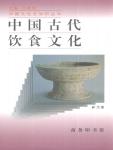Chapter 1 Section 1 Connotation and extension of food culture
The concept of "culture" has two meanings, broad sense and narrow sense.The former includes all achievements in the material and spiritual fields of human society; the latter refers to the spiritual achievements of human activities, including science and technology, various social consciousness, various systems and customs and other fields.
Diet is very common and very important.It is the primary material basis for human survival and transformation of physical fitness, as well as the premise of social development.Food culture is a general term for human beings to continuously develop food sources and produce various production fields of food, and various social lives developed from dietary practices, as well as various ideologies that reflect these two.Food culture is a broad-spectrum culture, ranging from major policies of the country to everyone's daily life. It is a culture that can be seen and touched every day.
The connotation of food culture is extremely rich, it is a knowledge-intensive subject, and it is also a subject that is connected with human practice everywhere.From its material basis, it is linked to the production of two major categories.The first category is food production, namely agriculture, animal husbandry and fishery production.Around this production department, there are soil science, astrometeorology, water conservancy, planting science, fertilizer science, breeding science, feed science, land development science, food resources science, ecology and other scientific and technological disciplines.Only in planting and aquaculture, there are dozens of professional and technical disciplines, such as the production of various food crops, spice crops and countless types of vegetables, fruits and nuts; various livestock, poultry, fish, amphibians, etc. , reptiles, edible birds, etc.Each category is a professional technical discipline.
The second category is the production of various stoves, kitchen utensils and tableware.Historically, this production sector involved the production of stone tools, bronze ware, iron ware, ceramics, lacquer ware, plastics, enamel, glass, aluminum products, stainless steel products, etc., each of which is a specialized technology.In modern times, there are also large-scale cooked food production lines, biscuit, snack production lines, beverage production lines, and large and small electromagnetic cookers, electronic microwave ovens, far-infrared rays, etc. used in cooking and food manufacturing.
The catering industry is also a production sector, which can be roughly divided into two categories, namely, the cooking industry and the food manufacturing industry.Both belong to processing production.That is to say, all kinds of food materials are finely processed, deep processed, and refined, and made into various delicious foods to meet the needs of human nutrition and various tastes.
The cooking industry includes such disciplines as nutrition, dietotherapy, preservation, brewing, flavor chemistry, gastronomy, and food aesthetics.Food manufacturing includes cakes, biscuits, puffed food, various bean and potato products, various meat products, various dairy products, various fruit and nut flavor products, various candies, various beverages, various ice creams, etc. manufacturing.All kinds of disciplines are a professional technology.The manufacture of various foods is related to biology, chemistry, physics, mechanics, electronics and other disciplines.At present, the food manufacturing industry has entered the era of program-controlled ingredients and automated production.
Sublimated from food practice, several disciplines have been formed, which are the extension of food culture, such as food aesthetics (or taste aesthetics, taste science, taste bud aesthetics), food folklore, food literature, food resources, etc.Food aesthetics and food folklore have been discussed in some discourses, but there is still a lack of systematic monographs on these two aspects.Food literature and art is a subject to be developed. There are countless wonderful chapters reflecting food in Chinese literary works, from literature to literature.Chinese writers, from Qu Yuan to Lu Xun, have not written works on food and drink.The writers either eulogized food production, or praised local famous food, or warned the world to cherish food, or cursed and exploited through food, or expressed friendship through food, etc... leaving many famous articles or sentences through the ages.In addition to literary works, other art fields, such as painting and plastic arts, also have many excellent works that express the beauty of food or food, such as the banquet portrait bricks of the Han Dynasty and the "Han Xizai Night Banquet Picture" by Gu Hong (Hong Hong) of the Tang Dynasty, and the Song Dynasty Zhang Zeduan's "Along the River During the Qingming Festival" is a representative work in this regard.Themes that express the beauty of food can be found everywhere, from fish and deer in Banpo painted pottery, pigs and ears of rice carved in Hemudu pottery, to Peking ducks in modern Xu Beihong, shrimp, crabs, frogs and mushrooms in Qi Baishi, etc. .Plastic arts such as Xiangsheng ceramics, Xiangsheng jade carvings, ivory carvings, bone carvings, wood carvings, brick carvings, stone carvings, etc. can be found everywhere.If the Chinese literary works and plastic arts works on diet are collected, it will be a huge and colorful book on diet aesthetics.Food resource science is a subject to be developed, which is the product of the combination of economic geography, ecology and food culture.
To sum up, Chinese food culture is based on a wide range of food practices. It is an important reflection of human survival and development, and is closely related to human material and spiritual life.As a subject of study, Chinese food culture is a comprehensive subject that spans natural science, technical science and social science, and integrates science and aesthetics.

